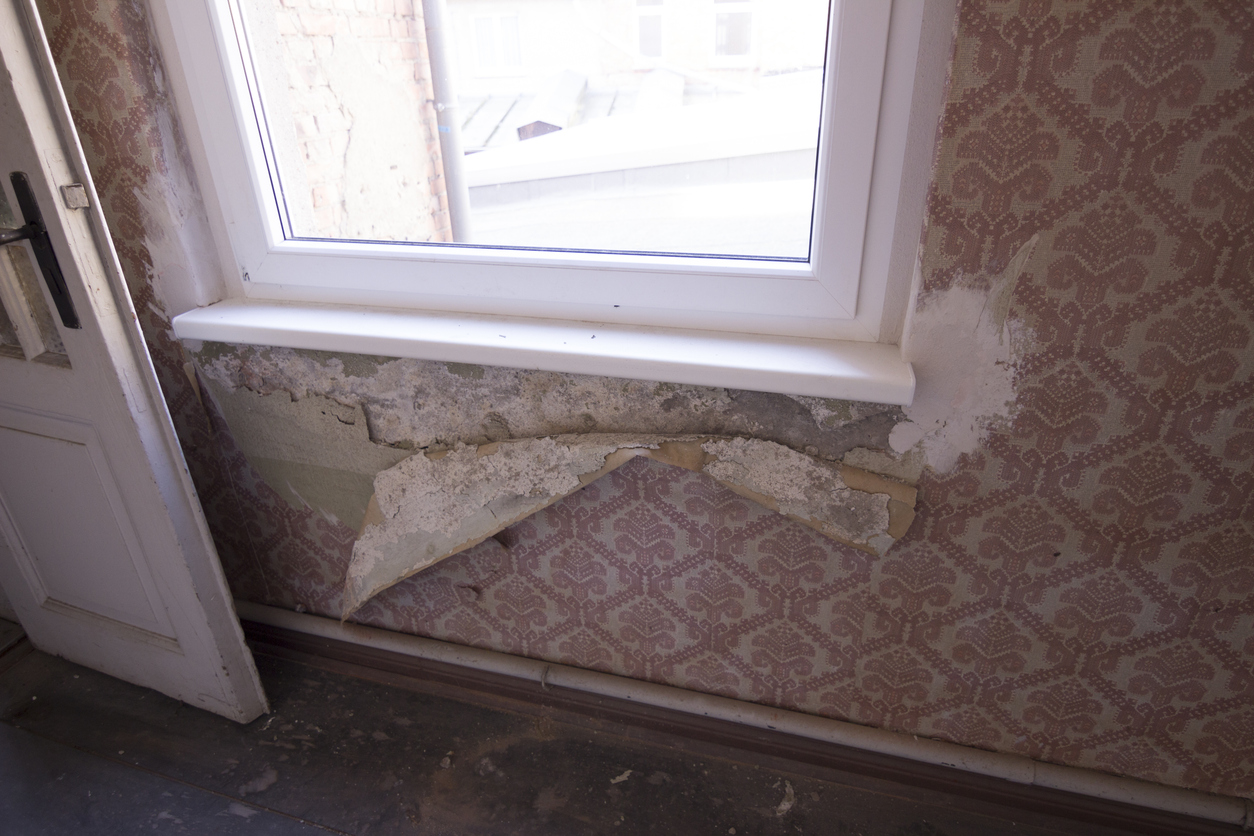We may earn revenue from the products available on this page and participate in affiliate programs. Learn More ›
Before putting their homes on the market, some sellers make expensive renovations that may or may not significantly improve the home’s resale value. Other sellers don’t want the hassle and expense of spiffing up their properties, and decide to market a home “as is.”
When you see a home that’s being sold in “as is” condition, what exactly does that mean—should you be worried that the property is a money pit? Is an as-is listing a wise strategy for sellers? Here’s what all parties need to know about these two little words.

What does “as is” mean, anyway?
Historically speaking, when a house was sold “as is” the home was in disrepair, says Katie Falk, partner at the Falk Ruvin Gallagher Team of Keller Williams Realty in Whitefish Bay, Wisconsin. In the current seller’s market, however, the term is not necessarily as negative as it once was.
“Selling a house ‘as is,’” Falk explains, “typically means that the seller wants the buyer to accept the condition of the home as it is upon writing an offer to purchase.” This means that the seller does not want to fix anything that may come up during the inspection, she says, nor do they want to engage in negotiations with the buyer.
However, buyers who engage in as-is transactions are not necessarily stuck if problems arise. “There are times where an inspection is performed after the offer is accepted on an ‘as is’ property,” Falk says, that “reveal issues that the seller was not aware of, such as a cracked heat exchanger in a furnace or leaks in the basement in an obscure corner.” In those scenarios, she explains, buyers who agreed to purchase a property as-is may request that newly discovered problems be corrected.
Related: 8 Things Every Home Inspection Checklist Should Include
As Is: The Upside
For sellers, the advantage to marketing a house “as is” is they avoid the hassle of costly and time-consuming repairs on the home they’re selling—and buyers know this in advance. Sellers may be “aware of siding that may need to be replaced, masonry work needing repair…scratched hardwood floors, and a need for an exterior paint job,” explains Ellen Schwartz, a licensed associate real estate broker for Compass who works with clients in Westchester County, New York, and Fairfield County, Connecticut. Offering the home “as is,” however, is the seller’s way of acknowledging up front that the house needs work, but they’re not willing to deal with those repairs themselves. Buyers know that the inspection is only for informational purposes, Schwartz adds.
Since an as-is home is not necessarily in disrepair, says Falk, sellers can benefit from adding this description to their home’s listing—particularly in a seller’s market, when it’s common to receive offers from multiple buyers. “Along with price and terms is the inspection contingency,” she says. “The seller does not want [the inspection] to be a contingency at all.” In other words, if the inspection reveals problems with the home, the seller still isn’t willing to negotiate the buyer’s original offer.
Buyers who willingly enter into as-is deals should be careful about making too many demands of sellers. A real estate transaction “can become prickly,” Falk warns, “if the buyer is requesting repairs and the seller is adamant about not making any changes.”

When Adding “As Is” to Your Listing May Not Be a Good Idea
The major downside to listing a home as-is on the Multiple Listing Service (MLS), says Schwartz, is “it may scare off some buyers because [the designation] sends a message that maybe the seller has not taken great care of the home.” Buyers expect there will be issues that they will have to deal with if they purchase an as-is property, and because “buyers don’t like issues,” Schwartz says, this could mean lower—and fewer—offers for sellers.
Her view is shared by Yawar Charlie, director of the estates division at Aaron Kirman Group in Beverly Hills, California, and a series regular on CNBC’s Listing Impossible. “When the supply is low and demand is higher,” he says, sellers are more likely to market their listings “as is.” “Sellers feel a little more empowered to do this because they are saying, ‘We are standing firm on our price.’”
Unless the home is truly a fixer-upper, however, Charlie advises against an as-is listing because “it turns off potential buyers, and you want to make sure someone has an emotional connection to your property.” A good description of the property goes a long way in creating this initial connection, he says, but “if…the house is being sold ‘as is,’ this can set up red flags for the buyer and they might think there is something wrong” with it. Those who are considering listing their properties might instead consider using digital tools like these to market their houses.
Sellers who list homes as-is might also give buyers negative impressions about them. How’s that? Charlie says, buyers who see an as-is notation on a listing “might also have the preconceived notion that the seller is unreasonable, and they don’t want to work with someone like that in a transaction.” A better strategy, he says, is for a seller to allow the buyer make an offer and conduct inspections. Afterward, the seller can inform the buyer that they want to sell the house as is, with the understanding that they may need to lower the price.
Related: 15 Signs That Fixer-Upper Might Be a Money Pit

The Pros and Cons of Bidding on an As-Is Home
An as-is house isn’t necessarily a bad deal. “If the buyer is planning on doing renovations after closing, they may not be so concerned” about doing a few more, Schwartz says. “They have the finances to deal with issues as they will be renovating most of the home anyway.” Buyers who are on a tight budget, however, might not have the funds for unexpected issues that could turn up in an as-is home.
Schwartz always advises clients to wait on the inspection report. Its contents may lead the buyer to walk away from the home, but it may also reveal that the home has no significant problems.
Charlie agrees that buyers should do their due diligence so they will know what they are getting into should they purchase the home, and remember that “even if a property is being advertised ‘as is,’ the buyer can still make a request for repair or credit” if there’s a problem with the property. When both buyer and seller are motivated, he says, an amicable agreement can usually be reached.
Related: The Most Popular Home Renovation Projects in America—And How Much They Cost

